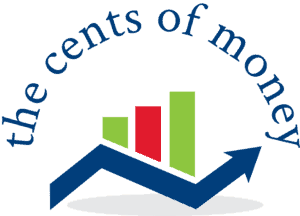Ready to learn how to invest?
Take heed from Warren Buffett’s famous quote:
“Rule number one: Don’t lose money.
Rule number two: Don’t forget rule number one.”
Whether you are learning how to invest on your own, with a finance professional, via robo-advisors, or for starting your retirement options, you should have a basic understanding of the financial markets and your options.
It is prudent to start investing as early in life as possible due to the following factors:
- The longer time will afford you the ability to take greater risks and recover from any mistakes.
- The enormous benefits of compounding interest work in your favor as you reinvest your earnings from dividends and appreciation.
- A longer time horizon allows you to take advantage of likely downturns in the market and reduce the costs of some of your holdings in your portfolio.
First, you need to put your financial life in order by asking yourself a few questions:
- Are you able to pay for your basic needs?
- Are your bills, including credit card bills being fully paid and on time?
- Do you have enough accessible liquidity in savings accounts or an emergency fund in the event of unforeseen circumstances?
- Is your budget relatively balanced with some flexibility?
- If offered, are you taking advantage of your employer’s match to your 401K retirement plan by contributing the maximum amount to the retirement plan?
- Are you emotionally ready to lose hard earned money?
Even if you answered affirmatively to all the above questions, it is never easy to lose money in the market.
Mistakes happen, even to my hero, Warren Buffett,.
I still remember one of my earliest investments soon after college graduation.
I was living at home until I could find an apartment so I did have some savings.
For my first investment, I called my broker as there were no online brokers at the time. I bought 100 shares in a California-based energy company that made biofuels which would be used for more efficient gas for cars
Without doing much of any research other than listening to a “smart’ coworker, I plunked down $3500 for this progressive company and watched the shares trade avidly even as its price turned south almost immediately. It was delisted when there was little value left in my shares.
Later I found out my shares represented ownership in a company whose holdings were eight lonely gas stations in Southern California with few other assets. It was my first experience in losing most of my money on one trade and put me in touch with my own risk and emotional tolerance. It was time for me to really learn all about the financial markets, my investment choices among various securities, and evaluating stocks on their own, or as part of mutual funds or exchange traded funds or ETFs.
Know the differences between savings and investing
Savings.
If you adopt a “pay yourself” savings policy, you may direct a portion of your paycheck to directly deposit into a checking or savings accounts at your bank. You can add to your account with excess funds after your spending less than you earn.
These cash or cash-equivalent accounts are insured up to $250,000 per depositor, per insured bank for each account ownership category by the Federal Deposit Insurance Corporation (FDIC). Having cash is safe if you are totally risk averse. You can hold your cash in interest-bearing accounts. Banks compete for your deposits such as Ally Bank.
The interest you earn from these accounts will likely not keep track with inflation. The risk/reward profile for cash-equivalent securities, also known as money markets, is low relative compared to bonds and stocks. These bank accounts also offer certificates of deposits (CDs) which can be desirable places to be when inflation rates rise to mid single digits or higher. In August 1981, one year Treasury Bills yielded 14.54% and three month CD yielded more than 14%.
Investing.
The risk/reward is different depending on where you invest but tend to be higher when you put your money in stocks. That is, the greater the risk, the greater the rewards. Investing in stocks are not federally insured, you can lose your principal investment, and/or lose your dividend income if your shares offer dividends but the company suspends payments.
Stock market returns measured by the S& P 500 composite, the preferred index (versus the sometimes better known Dow Jones Industrial Average) have averaged about 9.8% in the past 90 years. However, that nearly 10% return doesn’t reflect the volatility the market has seen during that time.
Market volatility happens regularly
To get a better sense of the market volatility there have eleven historic bear markets (market declines of 20% or more) from the Great Depression (early 1930s) to the Great Recession (2008-2009). The high and low S& P 500 prices during the 34 months between October 1929 and June 1932 reflect an 86% decline, while the drop between the 17 months between October 2007 and March 2009 was 56.4%.
Those were particularly painful declines, but just imagine for those who invested for the first time at the trough in the market, say in March 2009. When you start to invest, take it slow and understand the stock market is not linear, it doesn’t go straight up or down. You may want to simulate the market, by playing in the stock market game available on marketwatch.com.
An Investing lesson for my college students:
Stock Market Game. The college students I teach in my finance classes are required to play the stock market game with $1,000,000 (don’t worry! they have to give the money at the end of the term) and create their own stock portfolios. I use the free stock market game on marketwatch.com website. We use the simulation to learn about the financial markets, institutions, the Federal Reserve (the Fed) and to evaluate the fundamentals of stocks and respective valuations. They monitor their portfolio performance throughout the term, writing how certain stocks better weathered earnings reports, the Fed news, and financial headlines in the current news.
Even though it is not real money, they get the feel some of the rhythm of the markets and its sensitivities associated with macroeconomic (the economy) and microeconomic (industry/company) events. The students are attuned to Brexit fears, trade talks with China, the Fed consideration about raising/lowering the fed funds rates.
How you invest will depend on many factors:
- will you seek a finance professional such as an advisor or robo-advisor? There may be minimum amounts required for financial advisor, and just like all advisors, they need to be thoroughly researched for your comfort;
- Do you plan to be an active investor? If you are doing your own work, make sure you have the time to invest to really understand the big picture and recognize that what the Fed says could impact your stocks along with many other external factors along with following the companies you invested in. Recognize your picks should reflect a diversification strategy over different sectors, industries, and companies.
- would you rather be a passive investor? This is a recommended strategy for newcomers as well as very experienced investors. There are tons of low cost index funds, higher cost mutual funds and ETFs to choose from that appeal to any investment style, whether you are an aggressive, moderate or conservative investor, or want target-date funds which reflect funds managed according to an age-based or lifecycle timeframe. A great place to start is Vanguard with its diverse set investment products but there are many competitive offerings from many others available.
Be aware of risks that affect investor returns.
It comes with the territory of stock investing even if you are fully diversified and do a lot of the work or have hired the best fiduciary to manage your investments.
Market or external risks come from changes in the economy,unemployment, inflation, the Fed’s action or inaction or statements, regulatory action, politics, scandals whether in the US or abroad. Overhangs on the market have come from Brexit (UK leaving the EU), trade talks, changes in interest rates, tax changes, social media privacy, wars, tensions, 9/11, and many other factors.
Investment Risks can occur with the companies you have invested and may reflect some actual events that happen to companies that are different than what the market expects or what the analysts who follow these companies expect or what the companies themselves expect.
What is considered good news for the company and its stock. Stocks may rise on better than anticipated reported results whether it is revenues and cash flow growth, company’s future upward guidance, possible merger or acquisition, new product rollouts, reduced tax rates, addition of new management, stock repurchases, dividend increases, among many other factors.
What is considered bad news for the company and its stock. On the other hand, stocks may decline on company results that disappoint, departure of a favored CEO, stale products, increased competitive threats, increased regulatory costs, suspended dividends, increased capital spending or business failures that could result in corporate bankruptcies.
Read our two part series on Investing in IPOs. With all of the upcoming IPOs, including UBER, Pinterest and others, read our case study on Facebook’s IPO pricing and its aftermath in the secondary market.
Read our post: 11 reasons why you need to understand the Fed.
How to learn more about stock investing
There are many ways new (and experienced) investors can remain aware of the potential risks.
All publicly available information is available for us to learn about investments.
if you are managing your own stocks, register for investor relations information, find out when your companies are reporting their quarterly earnings and listen to a conference or read the transcript of conference call, visit various websites with company information and investor comments.
There are a ton of free apps: CNBC, The Street, marketwatch, Morningstar, and Seeking Alpha.
I also recommend watching CNBC, especially Mad Money with Jim Cramer. I am also on the Bogleheads community forums which address many investment and personal finance topics.
You are at the beginning of your financial journey and you have many roads to go.
Be patient. Don’t be rash.
You will likely make money through investments in the long run.
You will lose money along the way but stay rational.
There are many books to read on stock investments and a few I will recommend now are:
The Intelligent Investor by Benjamin Graham. Graham was Warren Buffett’s mentor and the book is still his recommended source.
Little Book of Common Sense Investing by John C. Bogle who recently passed away. He co-founded Vanguard and gave us the gift of low cost index funds and much more.
Anything Warren Buffett! I read all of Buffett’s well written Letters to Berkshire Hathaway Shareholders. 2018’s is now out. The Snowball: Warren Buffett and the Business of Life by Alice Schroeder provides great insides to the man and his start in investing at age 11.
Get Rich Carefully by Jim Cramer. As mentioned earlier, I am a fan of Jim Cramer who was a former hedge fun manager, co-founder of TheStreet. I have been part of his Chairman Club for years.
The Little Book That Still Beats the Market by Joel Greenblatt, a phenomenal investor and runs a private investment partnership.
Happy Investing! Have you started investing yet?
Please share your early investing experiences with us. What was the first stop you bought? We want to hear from you!
Hi There!
With a passion for investing and personal finance, I began The Cents of Money to help and teach others. My experience as an equity analyst, professor, and mom provide me with unique insights about money and wealth creation and a desire to share with you.

